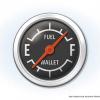Nitrogen In My Tyres!
Announcements
-
Similar Content
-
Latest Posts
-
By soviet_merlin · Posted
I fear it's probably better if they don't release an R36. The way modern cars are going I'm worried it'll be a great disappointment. -
Is there a video you could link as an example? I'm curious as I've never seen this.
-
Order for the 2025 model R35 GT-R were accepted from 3rd March and 26th August the last order rolled off the production line at the Tochigi plant. Concerning the R35 GT-R replacement, current Nissan CEO Ivan Espinosa said "Nothing has been decided about the GT-R at this time, but we are well aware that everyone is waiting. The GT-R will evolve and reappear in the future. Please be patient until that day comes." Nissan has a lot of issues with management and finances so take Espinosa's words with a big grain of salt. From what discussions I've had and read about here in Japan, not a lot of people are confident about Nissan's future, let alone the next GT-R.
-






Recommended Posts
Create an account or sign in to comment
You need to be a member in order to leave a comment
Create an account
Sign up for a new account in our community. It's easy!
Register a new accountSign in
Already have an account? Sign in here.
Sign In Now